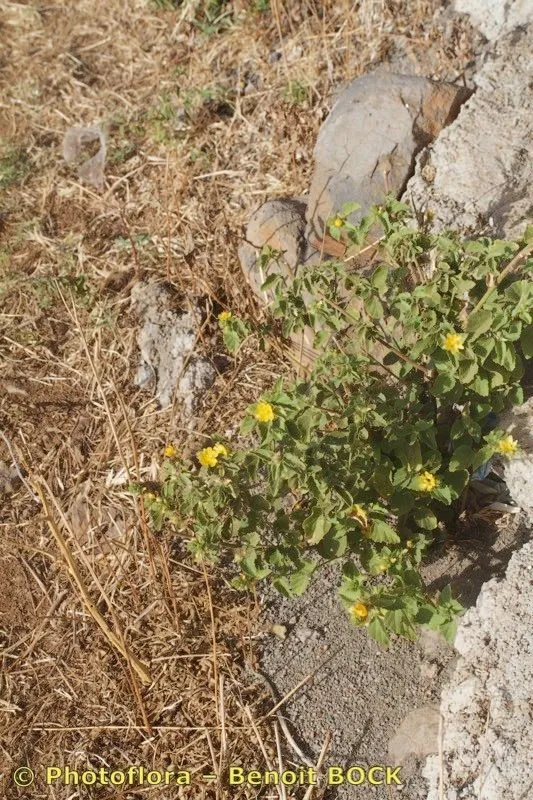
Author: (L.) Torr.
Bibliography: W.H.Emory, Rep. U.S. Mex. Bound. 2(1): 38 (1858)
Year: 1858
Status: accepted
Rank: species
Genus: Malvastrum
Vegetable: False
Observations: Trop. & Subtrop. America
Bastard sida-retusa, scientifically named Malvastrum americanum, is a notable member of the Malvaceae family. First formally described by W.H. Emory in his work “Report on the United States and Mexican Boundary Survey” published in 1858, this plant has since attracted the interest of botanists and plant enthusiasts alike.
Native to tropical and subtropical regions of the Americas, Bastard sida-retusa thrives in warm climates. The species is particularly well-suited to environments that offer ample sunlight and relatively stable, warm temperatures. Its adaptability to such climates has allowed it to flourish across a broad geographic range within these regions.
The plant is characterized by its resilience and capacity to grow in various soil types, making it a versatile addition to many ecological landscapes. This adaptability also underpins its common presence in the regions where it naturally occurs. The robust nature of Malvastrum americanum signifies not only an ecological presence but also a potential for contributing to the ecosystems in which it lives, providing food and habitat to various local fauna.
The Bastard sida-retusa is distinguishable by its growth habits and physical appearance, which align with the typical traits of plants in the Malvaceae family. Its flowers and foliage add to the biodiversity and aesthetic appeal of the areas it inhabits.
In botanical literature, Malvastrum americanum’s inclusion serves as a testament to the diversity and intricacy of plant life within tropical and subtropical zones. As with many species in this family, it underscores the interconnectedness of plant species, climate, and soil, highlighting the delicate balances that sustain various ecological niches.
Researchers and ecologists value Bastard sida-retusa for its ecological role and the insights it provides into plant life in tropical and subtropical climates. Continued study and conservation of such species are critical to maintaining the biodiversity and ecological health of these regions.
Eng: american false mallow, indian valley false mallow, bastard sida-retusa, mulberry-mallow, spiked false mallow, spiked malvastrum, spiked-mallow, wild mulberry
Spa: pegajosilla
En: Bastard sida-retusa, Mulberry-mallow, Spiked false mallow, Spiked malvastrum, Spiked-mallow, Wild mulberry, American false mallow, Indian Valley false mallow, Spiked mallow, Indian Valley False-mallow
Fr: Mauve d’Amérique, Mauve alcée
De: Amerikanische Scheinmalve
Es: Pegajosilla
: Indian valley false mallow
© copyright of the Board of Trustees of the Royal Botanic Gardens, Kew.
© copyright of the Board of Trustees of the Royal Botanic Gardens, Kew.
© copyright of the Board of Trustees of the Royal Botanic Gardens, Kew.
Taken Jan 5, 2022 by Juan Carlos Ordonez (cc-by-sa)
Taken Nov 1, 2020 by Caicedo Albarello Fernando (cc-by-sa)
Taken Jan 5, 2022 by Juan Carlos Ordonez (cc-by-sa)
Taken Jan 5, 2022 by Juan Carlos Ordonez (cc-by-sa)
Taken Nov 1, 2020 by Caicedo Albarello Fernando (cc-by-sa)
Taken Jan 1, 1900 by EOL − Acevedo, P. (cc-by-nc-sa)
Taken Sep 24, 2021 by EDMILSON NOGUEIRA (cc-by-sa)
Taken Feb 15, 2017 by Photoflora – Benoit BOCK (©)
Taken Feb 15, 2017 by Photoflora – Benoit BOCK (©)
Taken Feb 15, 2017 by Photoflora – Benoit BOCK (©)
Taken Feb 15, 2017 by Photoflora – Benoit BOCK (©)
Taken Feb 15, 2017 by Photoflora – Benoit BOCK (©)
Taken Feb 15, 2017 by Photoflora – Benoit BOCK (©)
Taken May 29, 2015 by EOL − Javi Gonzalez (cc-by-nc)
Growth habit: Subshrub, Forb/herb
Family: Myrtaceae Author: (F.Muell.) K.D.Hill & L.A.S.Johnson Bibliography: Telopea 6: 402 (1995) Year: 1995 Status:…
Family: Rubiaceae Author: Pierre ex A.Froehner Bibliography: Notizbl. Bot. Gart. Berlin-Dahlem 1: 237 (1897) Year:…
Family: Sapindaceae Author: Koidz. Bibliography: J. Coll. Sci. Imp. Univ. Tokyo 32(1): 38 (1911) Year:…
Family: Asteraceae Author: A.Gray Bibliography: Pacif. Railr. Rep.: 107 (1857) Year: 1857 Status: accepted Rank:…
Family: Fabaceae Author: Medik. Bibliography: Vorles. Churpfälz. Phys.-Ökon. Ges. 2: 398 (1787) Year: 1787 Status:…
Family: Aspleniaceae Author: (Cav.) Alston Bibliography: Bull. Misc. Inform. Kew 1932: 309 (1932) Year: 1932…